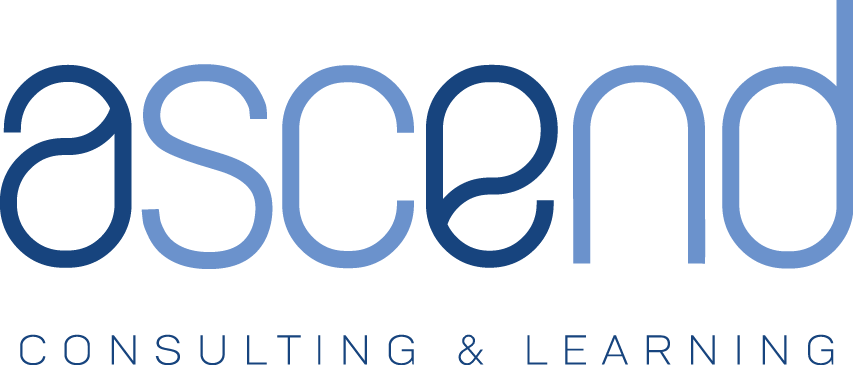
I have written numerous times on this blog about how important the roll of strategy is for successful architecture and engineering (A/E) firms. Strategy is the only way for firms to outperform “just average” over time. Strategy works best when it permeates the whole organization and drives everyday choices and decisions. Yet, too often, strategy is formed and held only at the top of an organization.
A/E firms that do this are missing out and unnecessarily holding themselves back. As it turns out, A/E firms are full of extremely smart people who are inherently capable of understanding strategy and thinking strategically. With a little work, A/E firms can take advantage of these capabilities to magnify their strategy and their success.
What is Strategic Thinking
To understand why architects and engineers are inherently capable of thinking strategically, we need to define what strategic thinking is and what it requires. Strategic thinking is the synthesis of knowledge, experience (both individual and collective as a firm) and data to make decisions to achieve a goal. It requires knowledge, insights, systems thinking, focus, and the ability to solve problems. It is the type of thinking architects and engineers have been trained to do on a regular basis.
A/E firms must nurture these abilities for them to translate to strategic success. Architects and engineers are great problem solvers, so firms should concentrate on building their knowledge, insights, systems thinking and focus as it relates to strategy to take full advantage of these capabilities.
Knowledge
To make decisions that support their firm’s strategy, A/Es must be able to answer the question, “What is Strategy?” It seems simple enough but if you ask ten different engineers this question, you will probably get ten different answers. Most of our academic lives and time spent learning have been focused on building knowledge of design, systems, and materials. There was little time to build business knowledge.
As architects and engineers progress in their careers, business knowledge in all shapes and sizes – finance, marketing, management, etc. – will help them succeed. But one of the most important areas of knowledge in business, strategy, is also the most misunderstood and neglected. Luckily, there are many great resources available to build this knowledge in A/Es. A great place to start is an article by Michael Porter, “What is Strategy?”, or our online course, “Introduction to Strategy for Architects & Engineers.”
Insights
Once A/Es build the knowledge of what strategy is and how it drives their firm’s success, they will realize that they must also build insights – insights into their business and the markets in which it competes. Strategy is the link between a business and its markets. Without deep insights into both, firms are just guessing when developing and executing strategy.
For strategy to permeate to all levels of an A/E firm, the firm must share a common understanding of the insights that form the basis of their strategy. All employees should understand the unique capabilities, activities, culture, and mission of the firm. They should understand the basic dynamics of the industries and markets, and the needs of the clients, their firms serve. Frontline workers armed with knowledge and insights understand the impact of their decisions and recognize when assumptions shift.
There are several ways to help develop insightfulness in A/E firm staff. There are several resources on this blog that describe ways to recognize and develop insights into a firm and its markets. Better yet, have them participate in the strategic planning process, even if it is just to provide input and feedback into that process.
Systems Thinking
Architects and engineers are great systems thinkers. Think about the design of a building, for example. Architects, structural engineers, civil engineers, mechanical engineers, and electrical engineers (I know, I left several out) all need to consider the impact their decisions have on the system and the rest of the team. Similarly, to practice strategic thinking and make good strategic decisions, A/Es must understand the how their decisions affect the rest of the business and its strategy.
To build systems thinking from a business perspective, A/Es need to develop an understanding of the systems that build and support their firm’s competitive advantage. Michael Porter developed two great tools to help firms discover and understand these systems and their interactions – value chain analysis (mapping the steps in creating value for clients) and activity-systems mapping (mapping how these activities fit and support a firm’s strategic positioning). These two tools will help firms discover the unique activities and interactions that drive their competitive advantage. Armed with this information and this way of thinking, A/Es will better understand how their daily decisions strengthen, support, or weaken their firm’s strategic position.
Focus
Strategic thinking requires focus – the ability to prioritize and make choices and the willingness to support trade-offs. When crafting strategy, firms must make the five choices outlined in the book “Playing to Win” by A.G. Lafley and Roger Martin – their winning aspirations, where they will play, how they will win, capabilities they must have in place, and the management systems they will put in place to support strategy. These choices help firms focus on the questions they must answer to put strategy into action.
Once a firm makes the choices above to establish strategy, the daily actions and decisions of its employees should support these strategic choices. Firms can use these choices to establish strategic guide rails – consisting of their objective, scope, and advantage – to focus these daily actions and decisions and to allow strategy to emerge organically in response to daily challenges and opportunities. I discuss these strategic guide rails further in this blog post.
Armed with the knowledge, insights, systems thinking, and focus described above, architects and engineers can fully utilize their problem-solving abilities to make great strategic decisions to magnify the success of their firms. It takes time and effort to build these skills, but I can ensure you it will be time well spent.

